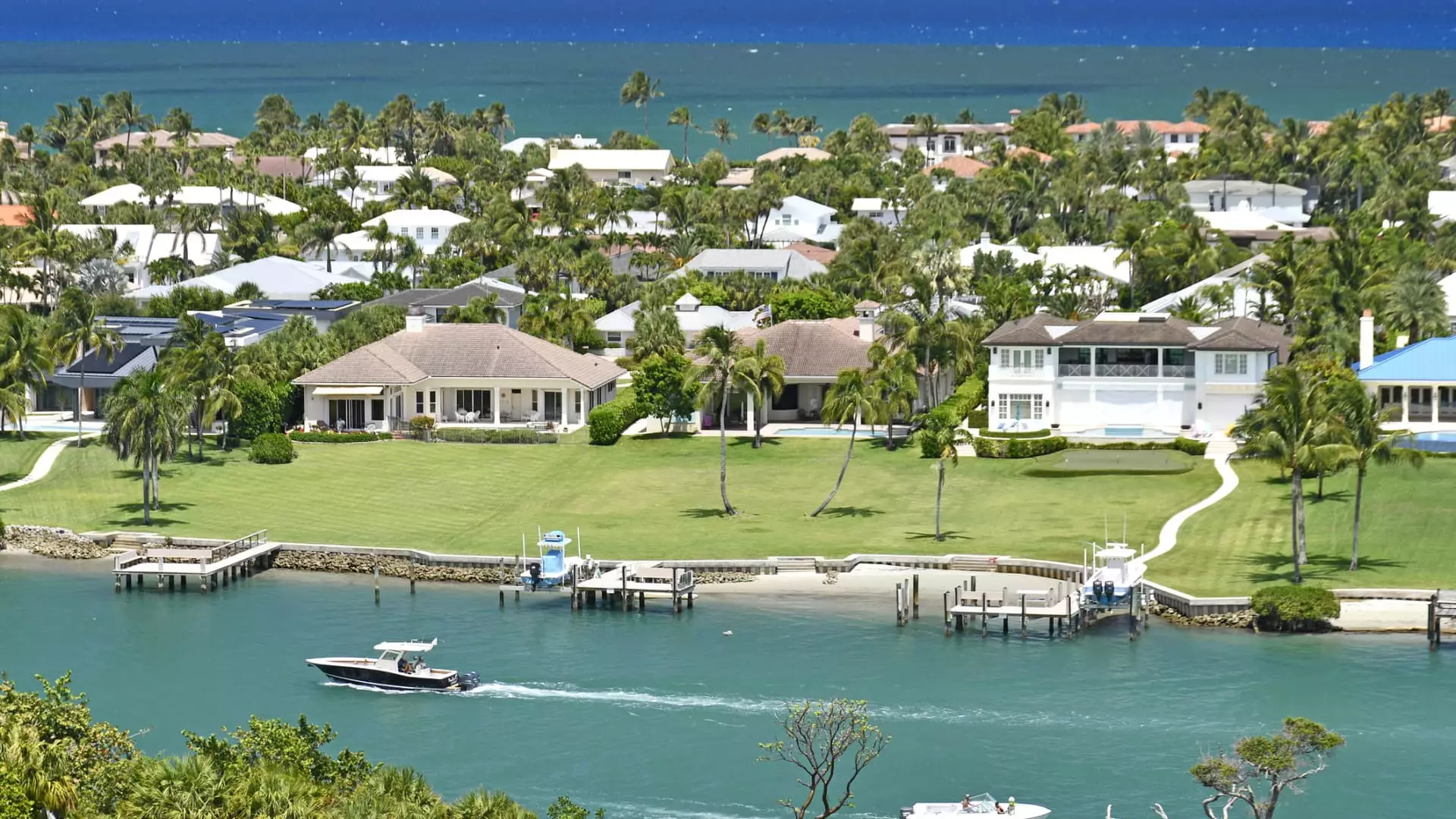The luxury real estate market in 2025 reveals a striking schism between ultra-wealthy buyers—those with net worth north of $30 million—and their merely affluent counterparts. This divergence isn’t just a trivial detail but a reflection of deeper economic anxieties and behavioral shifts among the wealthy classes. It’s apparent that economic uncertainty—rife with trade tensions, rising interest rates, and volatile stock markets—has catalyzed an evolving paradigm in how these two groups approach high-end property investments. The ultra-rich remain undeterred by market fears, aggressively pursuing significant purchases predominantly through all-cash offers, while their less wealthy peers have become more cautious, constrained and understandably sensitive to borrowing costs.
Cash is King: Ultra-Wealthy Buyers’ Strategic Edge
The surge in cash transactions among the ultra-wealthy is a telling development. With borrowing rates skyrocketing, those flush with capital are rejecting debt altogether, opting to capitalize on the advantages that cash brings: control, speed, and security. This trend underscores a fundamental truth—where interest rates climb, market flexibility diminishes for those dependent on financing. Ultra-high-net-worth individuals have a significant strategic advantage in this landscape, enabling them to act swiftly and decisively, solidifying their grip on the most desirable luxury properties. In essence, elevated borrowing costs are not just influencing buying patterns; they are creating an uneven playing field favoring the super-wealthy.
The Cautious Dance of the Affluent
Meanwhile, affluent buyers—those with substantial but comparatively limited wealth—are manifesting a far more conservative stance. Unlike their ultra-rich counterparts, these buyers are more likely to be deterred or slowed by economic uncertainty and costlier financing. The heightened sensitivity to interest rates means these buyers are carefully weighing investment decisions, putting many plans on temporary hold. This caution isn’t just prudent; it reflects the tangible limitations placed on them by broader market forces. Unlike the ultra-rich, affording cash is often not an option, so they must navigate an environment that is, frankly, hostile to leveraged property investments.
Luxury Real Estate As a Wealth Safeguard and Inflation Hedge
Despite these headwinds, it’s telling how real estate retains its allure as a “hard asset” and a bulwark against inflation. Savvy investors among the upper echelons recognize property as more than just a home; it’s a refuge from market volatility and currency devaluation. The majority of luxury property buyers are either maintaining or increasing their exposure to this asset class, signaling a trust in tangible wealth accumulation over financial instruments, especially equities. This behavior confirms a center-right perspective that values prudence, tangible assets, and long-term stability over speculative investment, especially under fragile economic conditions.
Market Slowdowns and Rising Seller Expectations
Yet, the luxury market isn’t immune to softening demand. After a strong start in 2025, recent months have seen a notable dip in sales and a rise in price reductions—particularly post-stock market dips and amidst broader economic jitters. Sellers are being pushed to recalibrate their expectations in the face of a more discerning and value-conscious buyer base. The median price points—$1.7 million for single-family homes and $1.25 million for attached units—suggest a market that is wealth-driven but still sensitive to macroeconomic tremors. This recalibration demands a level of practical realism from sellers that was perhaps less pronounced in previous, more exuberant cycles.
Refined Tastes and Elevated Buyer Demands
Another revealing development is the heightened sophistication among luxury buyers, especially first-timers. Gone are the days when a luxury property merely needed to exude opulence; today’s buyers demand cutting-edge features—smart home appliances, spa-like wellness amenities, and seamless indoor-outdoor living spaces. These nuanced preferences are telling of a wealth culture that prizes experience, innovation, and lifestyle integration, not merely status symbols. This evolution reflects a modern luxury ethos: it’s not just what you own, but how the property enriches daily life with convenience, comfort, and style.
A Market of Opportunity, But Not for All
The current luxury real estate landscape offers a cautionary tale wrapped in opportunity. While the ultra-rich continue to consolidate their advantage through cash deals and refined tastes, the affluent face a challenging reality—economic headwinds are forcing selectivity and patience. This bifurcation is not inherently detrimental; rather, it crystallizes a natural market correction that rewards capital strength and prudent investments. From a center-right standpoint, it represents the resilience of wealth preservation through tangible assets and the inevitability that liquidity—and not just aspiration—ultimately governs access to luxury real estate in uncertain times. This is an expensive market for a reason: only those who plan carefully, adapt quickly, and wield capital decisively will truly thrive.

